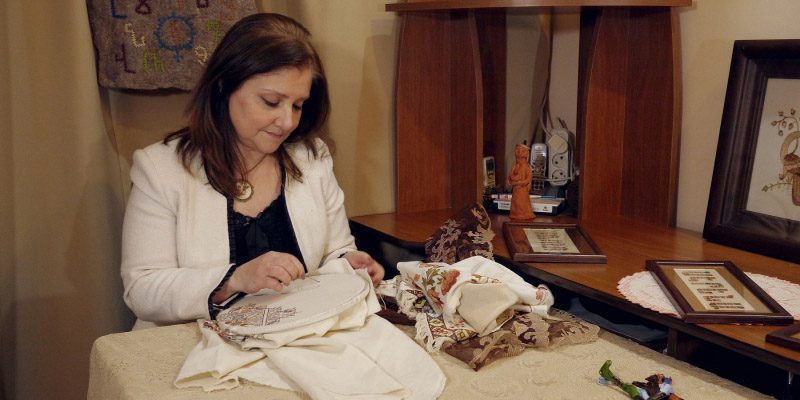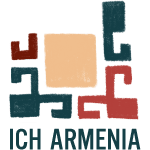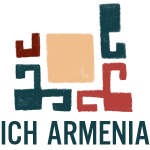
Skills and knowledge related to traditional craft, decorative-applied art.
The embroidery school of Cilicia, whose carriers are Syrian-Armenian women, was formed on the basis of the traditions of the Ani school. In Cilicia, however, several centers stand out, the most prominent of which are Marash, Aintap, Urfa. The oldest examples of embroidery made with the Marash pattern in Armenia are from the 18th century, but 14th-15th centuries dated examples are preserved in the Ashmolean Museum at the University of Oxford. Armenians have settled in Syria since ancient times, but a large Armenian community was formed in Aleppo at the beginning of the 20th century, after the Genocide. Cilicia-Armenians from Aintap, Marash, Urfa and other cities settled here, who brought with them the knowledge and skills of Armenian crafts, through which they were able not only to make a living, but to keep the tradition alive, to create unique designs of embroidery and lace. The high-quality handicrafts of Armenian women and girls greatly helped them to maintain their existence in a foreign environment. Missionaries contributed to this, providing raw materials to Armenian women working at home, as well as opening workshops in orphanages. Armenian women often united and worked in groups. Their skills were later passed on from mothers to their children and grandchildren, they were taught not only in families, but also in newly created creative associations. Later, thanks to the great work of Armenian women, fashion productions based on embroidery traditions were created in Aleppo.
Syrian Armenian women master more than 15 types of embroidery and lace. In embroidery, the works made with Aintap, Marash, Urfa, Tigranakert, Kilis, Swazi, Van, Malatia stitches, as well as “Shadow work”, “Blind work”, “Titeghi work” techniques are especially noticeable. In lace making, in addition to the traditional embroidered lace, they master the needle-helu, small shuttle, lace and “Lasse” techniques. Syrian-Armenian women have preserved and developed the sewing techniques specific to the Cilicia embroidery school, creating new ornaments and household objects, decorative works in line with modern times. “Aintap stitch” is a special type of threading, which is embroidered by removing the threads of the cloth in the direction of the width and length of the fabric and obtaining grids of the desired shape. Aintap threading is done together with a dumbbell and linear platformers. Currently, embroidery is done on a thicker cloth, keeping the principle, and the new style is called “Hartnkar”. “Marashi stitch” is secret, also known as “woven” stitch. The thread operating in this pattern had a certain order of transitions, a mandatory path to form the simplest ornament, the working thread passed through the same line four times, according to which, only the first and second rows were attached to the cloth, the last two rows were woven over the first ones. “Marashi” embroidery is made with twisted thin cotton threads, on cotton and velvet cloths, using vegetable and geometric ornaments. The Sebastia-Swazi stitch is the Tars stitch. the ornament with colored threads shapes the cloth not from the surface, but from underneath, in order to get the desired pattern on the surface. “Kilis stitch” is a top stitch, a combination of two different colored pieces, the upper one of which was cut according to the ornaments and attached to the takin so that the other colored piece was visible, creating a cut ornament. “Urfa” embroidery is flat, it is made with colored silk threads, sometimes with gold thread, on silk or cotton cloths, exclusively with floral patterns. With the aforementioned sewing and lace techniques, women and girls continue to create the most diverse items for everyday use: tablecloths, blankets, handkerchiefs, curtains, different parts of clothing, dowry accessories for young girls, the best samples of which are donated by women as a vow to the church.
Syrian-Armenian women who moved to Armenia continue to keep alive their inherited embroidery and lace-making traditions. The preservation of the originality and characteristic features of the historical Cilicia embroidery school, their uninterrupted transmission and bringing to the present day is of great importance for the development, dissemination and new appreciation of this field of folk art.


